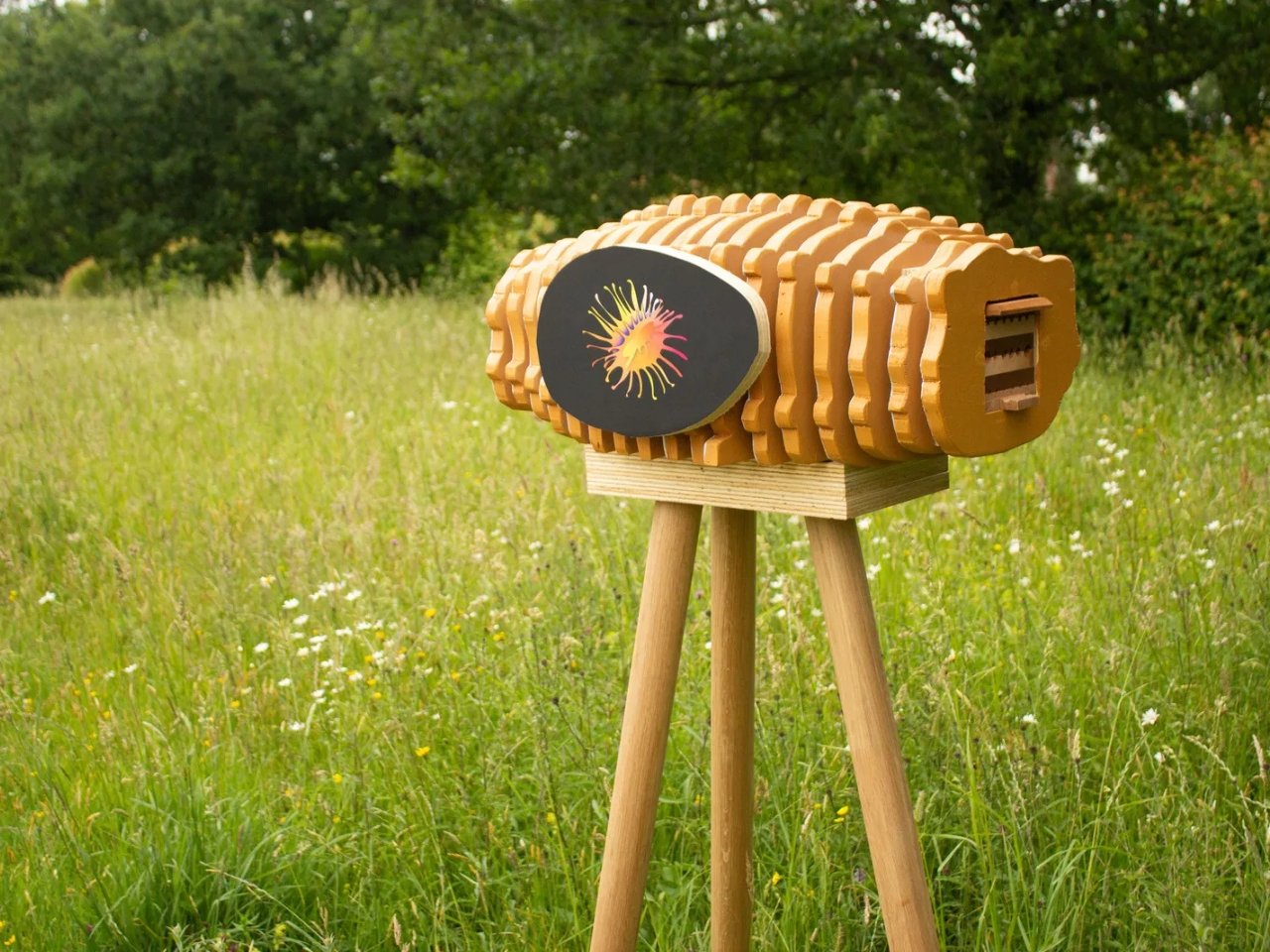Nestled in the heart of Wakehurst, Kew’s wild botanic garden in West Sussex, a remarkable new installation is teaching us how art and science can unite for bee conservation. “Seed Stories” by visual artist Kristina Pulejkova is more than just a work of art. It is a thoughtful, practical contribution to pollinator conservation in the UK, blending sustainability, science, and digital technology in a way that feels both innovative and deeply meaningful.
“Seed Stories” features four striking wooden sculptures, each carefully crafted to serve as both an artwork and a bee hotel. Pulejkova’s vision was to create pieces that not only inspire the imagination but also provide real refuge for bees at a time when their habitats are increasingly threatened by environmental changes. The design of these pollinator hotels draws direct inspiration from the Millennium Seed Bank’s collection at Wakehurst. This seed bank is the largest underground resource of its kind in the world and plays a vital role in conserving wild plant species for the future. Pulejkova’s sculptures use untreated marine ply and cedar, materials chosen for their environmental compatibility, natural antifungal properties, and aromatic qualities. These choices help ensure that the hotels remain safe and comfortable for bees, especially during periods of extreme heat in British summers.
Designer: Kristina Pulejkova
The creation of “Seed Stories” was a truly collaborative process. Pulejkova worked closely with Dr Janine Griffiths-Lee, who leads the “Trees for Bees” habitat restoration initiative. Every detail of the pollinator hotels is rooted in scientific research. The entrance holes, for example, are based on data about bee preferences, while the color palette was selected for its appeal to the bees’ visual spectrum. Blues, yellows, and violets are favored, while reds and greens are avoided, reflecting how bees perceive color in nature. These design choices do more than attract bees. They allow researchers at Wakehurst to collect pollen left behind in the hotels, helping them study which species are drawn to different tree types. This transforms the installation into a living laboratory, offering valuable insights into how pollinators interact with their environment.
A unique feature of “Seed Stories” is its integration of digital technology. Each of the four sculptures includes an augmented reality (AR) experience, accessible through a dedicated app. When visitors scan the sculptures, they can enjoy interactive educational stories about specific seeds from the Millennium Seed Bank. These stories highlight the crucial role of the facility in climate preservation, biodiversity, and global food security, making the learning experience both engaging and memorable. By installing pollinator hotels directly within the landscape and aligning their design with ongoing scientific research, “Seed Stories” contributes to broader conservation efforts at Wakehurst. The project not only provides safe havens for bees but also promotes biodiversity and helps scientists better understand the delicate relationships between pollinators and plants.
The post Seed Stories art installation also serves as ‘hotel’ for bees first appeared on Yanko Design.

